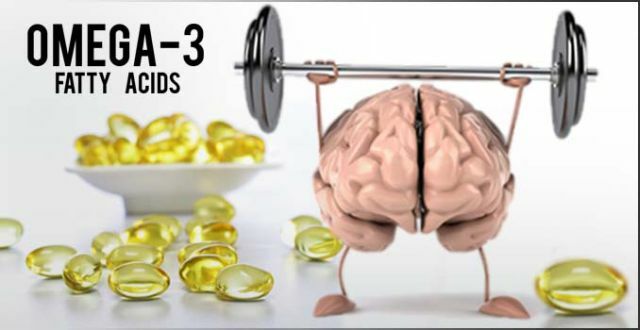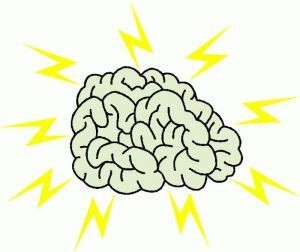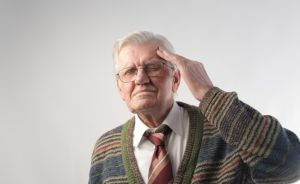 Among the male half of the population, stroke is in the fourth place of in the list of the most common causes of death. The first places are occupied by cardiovascular diseases, cancer and various accidents.
Among the male half of the population, stroke is in the fourth place of in the list of the most common causes of death. The first places are occupied by cardiovascular diseases, cancer and various accidents.
How quickly will be assisted in stroke, often determines in the future, whether the victim will survive and will not remain an invalid for life.
Therefore, it is very important to know about the signs of this disease and about the methods of first aid.
Contents
- General information about the disease
- General information about the disease
- About the disease
- About the symptoms
- The ischemic form
- The hemorrhagic form of the disease
- The difference in the disease in men and women
- Male symptoms of the disease
- Distinguishing signs of the female stroke
- First signs
- How to quickly recognize the attack
- First aid
- Complexmeasures for the treatment of pathology
General information on the disease
Stroke is a fairly common phenomenon in a modern world full of stress. Many believe that the risk group is, first of all, the elderly.
It arises as a result of blockage, spasm or rupture of the cerebral vessel, after which a certain part of it ceases to be supplied with blood, oxygen starvation occurs and, as a result, the brain is damaged and the muscles of one side of the body are paralyzed. It can be said that this is a kind of cerebral infarction.
Scientists have proven that men at an earlier age than women are at risk of stroke.
The main causes of the disease in the male population:
- disturbed blood supply;
- thrombosis;
- occlusion of blood vessels;
- internal cerebral hemorrhage caused by ruptured cerebral arteries.
- formation of an embolus( clot) in a vessel.
Risk factors for development of stroke:
- presence of relatives who have suffered a stroke or infarction;
- susceptibility to clot formation;
- diabetes and overweight;
- sedentary lifestyle;
- atherosclerosis, high cholesterol;
- hypertension, heart pain, arrhythmia;
- vegetovascular dystonia, ischemic attacks;
- constant stress;
- is a bad habit.
Symptoms and signs of the disease
Signs of a stroke appear suddenly and can go by themselves. 
But this only means that the will be followed by a real stroke. Therefore, do not waste time for nothing and after the first mini-attack you need to call an ambulance.
This can save the life and health of the victim, since the successful outcome of the disease depends to a great extent on the speed of assisting him.
Two types of stroke are distinguished :
- Ischemic.
- Hemorrhagic.
Ischemic form
Ischemic - occurs most often. Its cause is the rupture of the thrombus and the blockage of the artery, resulting in a certain area of the brain ceases to receive oxygen.
Its signs:
- for a few days or hours before the attack the patient feels weak and dizzy;
- he is suffering from headaches;
- impaired vision in one eye or immediately in both;
- from time to time his arm or leg is numb;
- may cause vomiting, confusion.
The faster the victim receives help, the less damage to his health.
Hemorrhagic disease
Hemorrhagic stroke is accompanied by a rupture of the cerebral vessel.
Signs of this type of stroke in men: headaches, dizziness. The victim may fall into a coma.
Symptoms:
- hypertension;
- raucous and loud breathing;
- complexion becomes crimson;
- may cause vomiting;
- view is often impassive;
- it is possible to involuntarily defecate;
- there is paralysis of the body and asymmetry of the face.
Often as a result of such a stroke, the victim either dies within a year, or remains permanently disabled.
About the difference in the disease in men and women
There is a significant difference between the male and female stroke, which consists in the as follows:
- Age of the - men are at risk for disease after 40 years, while women are more likely to suffer from it after 60 years.
- The incidence of death in as a result of stroke in women is higher.
- The cause of the blow in men in most cases are bad habits - smoking and craze for alcohol. Women often have a stroke as a result of strong emotional experiences of a negative nature.
- Symptomatic of stroke in women is expressed more clearly .
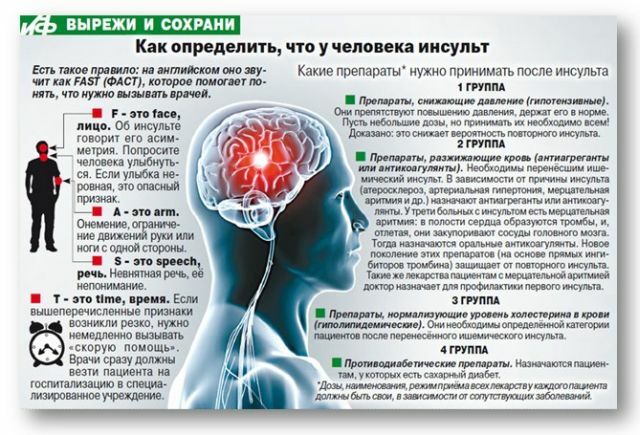
Male symptoms of
Disease Symptoms of stroke in men who talk about the approaching attack:
- headache, weakness;
- movement coordination disorder;
- violation or loss of speech;
- clouded consciousness;
- problems with swallowing;
- epileptic seizure;
- impaired vision, hearing;
- loss of consciousness.
These signs may soon disappear, but remember that after such an attack, a real stroke may occur.
Distinguishing signs of female stroke
In women, the disease manifests atypical symptoms:
- nausea, weakness and hiccough;
- paresis( weakness) or muscle paralysis;
- heart palpitations and shortness of breath;
- pain in the chest;
- disorientation, loss of consciousness;
- sharp pain of the affected side of the face or body.
 Very often a stroke is preceded by a microstroke. What signs of a micro-stroke in men will indicate the approach of an attack.
Very often a stroke is preceded by a microstroke. What signs of a micro-stroke in men will indicate the approach of an attack.
What is the purpose of ultrasound of the vessels of the head and neck? You can visually check with the video how the procedure goes.
First signs of
The first signs of a stroke in men - dizziness, headache and weakness.
may later become :
- nausea and vomiting;
- blood flow to the face, increased sweating;
- speech and movement coordination disorder;
- is a rare pulse;
- numbness of the feet or hands, often on one side of the body.
How quickly to recognize an attack of
To make sure that a person has had a stroke, ask him to do the following:
- let him try to smile - if it's a stroke, then the smile will turn out to be a curve due to paralysis of one of the sides of the body;
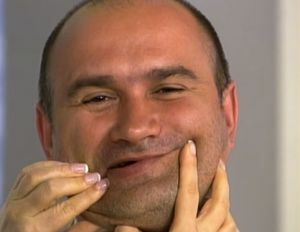
- ask him to say some simple phrase - a slow, stuttering speech, like a drunk man, shows the stroke.
- when trying to raise your hands, one of them will be lower, if this side is hit by a blow.
- if the victim sticks out his tongue, then in case of a stroke he will have an asymmetrical shape, may fall on one side.
First aid
After seeing the symptoms of the disease, immediately call an ambulance and start helping the victim. For this:
- Put the patient on a high pillow, his head should be raised.
- On the back of the head, he needs to apply a cold compress, and at the feet - a heating pad.
- Provide fresh air access.
- Remove the patient's restraining movement of the clothes.
- Do not let him stand up or move, otherwise his condition may get worse.
- If possible, measure blood pressure, if it increases, give the affected tincture of valerian or hawthorn. But it is worth remembering that you can reduce the pressure only by 15-20% of the initial pressure.
- If you have vomiting, you need to turn the patient's head sideways so that he does not suffocate from vomiting.
- You can not give him antispasmodics, use ammonia, because he can provoke a stop of breathing.
- If an epileptic seizure occurs, you need to put the victim on his side, putting something under his head. Periodically, it is necessary to remove the foam from his mouth with a handkerchief. To avoid biting the tongue between his teeth, you need to insert a comb, wrapped in a handkerchief.
- Even if the patient has stopped breathing, can not hear the pulse and there are no other signs of life, it is worth continuing his resuscitation with artificial respiration and indirect heart massage until the ambulance arrives.
Complex of measures for the treatment of pathology
 With the timely commencement of treatment with , the use of thrombolytics, which contribute to the restoration of blood supply in the affected area, is acceptable.
With the timely commencement of treatment with , the use of thrombolytics, which contribute to the restoration of blood supply in the affected area, is acceptable.
But they need to be administered in the first few hours after the first signs of a stroke.
It is more difficult to recover from a hemorrhagic stroke. All that can be done is to watch, wait for the hemorrhage to stop in the brain.
Sometimes surgical methods of treatment are used.
It is also important to follow preventive measures to prevent the onset of a second stroke:
- after ischemic stroke is advisable after taking advice from a doctor to take drugs that interfere with the formation of blood clots;
- surgical method of prevention - the introduction of a stent providing expansion of the lumen of the affected artery.
It should be noted that it is easier to prevent a stroke than to treat it. To do this:
- avoid alcohol abuse and smoking;
- periodically add to your diet vegetables and fruits;
- to go for walks, go in for sports;
- fully rest;
- to control your weight;
- check the blood cholesterol level.
So, we can conclude that the stroke - is a serious and dangerous disease, which can lead to fatal outcome or to lifelong disability.
Because of their way of life, men are more likely to suffer from this disease than women, so they should pay more attention to their health.
It should also be remembered that helping a stroke victim in the very near future is the key to a successful outcome of the disease.

